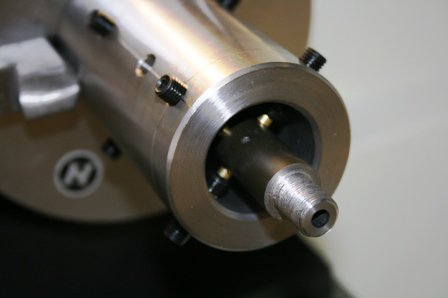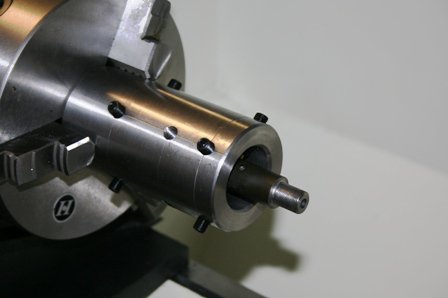Ray is quite the guru when it comes to the PM1236 and he really covered it. Since you noted that you would use it for gunsmith work and that is what I use mine for 99.9% of the time I thought I would add a few specific things I have found. I have found that a outboard spindle spider on this style of lathe is useless on all but the longest of barrels (24" and up) due to the long headstock. I chose a PM1236 but I quite frequently use a Grizzly G0709 in a gun shop and can tell you that the bolts in the outboard spider have been long lost. The only time I have used them has been for chambering long Remington 700 barrels and although I wish I could say I have done lots of them, in truth I haven't. I do use my homemade inboard spider constantly. Here is my take on the roller tips as it refers to gunsmithing. Roller tips are very nice to have but they STILL will scratch and mark a barrel plus they limit the capacity of the steady rest as I found out making my inboard spider. I found out that I needed a set of both types so even if I had bought a lathe with roller tips I would have bought a set of brass tipped ones anyway. The better option is to make a much nicer set of rollers yourself. The ones I bought have some play in them and don’t seem to be well made. I think this is what does most of the marking on the barrel so I am going to make my own. I also might try to make some sort of hard plastic ring on the outside of the bearing as well.
Changing gears isn't the most convenient thing but, the gearbox on the PM1236 is laid out pretty good for the gun threads I use most, so I do not change the gears that much except for Metrics (14x1 mm left hand). That just requires a gear spacer change. BTW You have to spend $$ and go up a few lathe sizes to get totally away from gear changing. <o></o>
Great feedback Tripletap. I was kind of leaning toward the inboard spider similar to the one the viper venom guy (Carol Pastor ?) uses. Its too easy to buy a barrel already profiled now to plan on profiling all the barrels ill do, so my steady rest use will be limited somewhat. Im convinced the PM1236 is the right machine for my uses, but being a DIYer, I have to overthink everything, which is good sometimes I guess.
Richard



